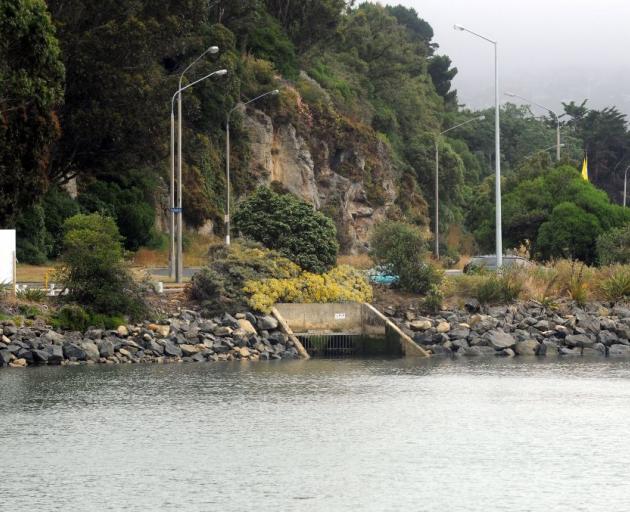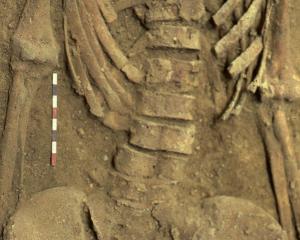
At the core of Port Otago's "Next Generation'' programme is its dredging activities, the company having been granted resource consent to deepen and widen the shipping channel in the lower harbour and dispose of the soil at sea.
The approval was subject to wide-ranging conditions, involving ongoing monitoring and research into the effects of the dredging and soil disposal, in particular the turbidity of the water in the areas being disturbed. (Turbidity is the concentration of suspended particles; stirring up sediment leads to a higher concentration of particles floating in the water.)
Should turbidity become too high the particles in the water can reduce sunlight filtering through to plants and animals.
The biology in the harbour naturally has a degree of tolerance due to the nature of their habitat. However, if high turbidity is sustained then it can have a negative impact.
Port Otago has seven fixed turbidity monitors located in the harbour. In addition, there are three buoys near its spoil disposal site 6km off Taiaroa Head. If the measured turbidity exceeds the trigger level (86mg per litre) or turbidity limit (108mg per litre), action would need to be taken to reduce turbidity.
‘‘The biggest potential impact of dredging is smothering rare habitat. There are rocky environments which would be prone to change if sediment settled on them,'' Otago University marine sciences PhD candidate Matthew Desmond, who is involved in a six-month harbour monitoring programme involving Dunedin school groups, says.
‘‘Seaweeds and invertebrate species could get smothered, too. Increased turbidity decreases photosynthesis so it would change habitats at that basal level, reducing productivity.''
The university's marine sciences department and the New Zealand Marine Studies Centre in Portobello are leading the community initiative.
‘‘The project will provide us with a time-series of data,'' Desmond says. ‘‘In about August we'll get together with all the schools involved and they will present their findings.
‘‘A lot of the motivation stemmed from public concern over the dredging process. That's been going on for a long time. There were a huge number of submissions to the Environment Court expressing concern, so that made us think about what part we could play in regards community involvement.''
Brian Stewart, an environmental scientist at Ryder Consulting in Dunedin has been much involved in various monitoring studies of the harbour. He points out the ‘‘cleaning-up'' of sewage discharged into the harbour has been going on for about 60-70 years.
By the year 2000 all sewage discharge from Port Chalmers, Burkes, Company Bay and Broad Bay was diverted away from the harbour.
"That has changed drastically now. Now it all gets piped to Tahuna for treatment and then goes to the ocean outfall.
"Certainly, the health of the harbour has vastly improved in the last 50 years. But it's not all about sewage. Stormwater from the Dunedin gasworks is no longer discharged into the harbour; likewise the tannery at Sawyer's Bay no longer discharges.
"Otago Harbour has certainly improved and I think, with increased environmental awareness, that will continue.''
In regards to water quality, the Otago Regional Council has no major monitoring programme in place for Otago Harbour.
At present, the ORC collects most of its environmental data regarding the harbour through resource consent holder monitoring (in other words, via external sources).
‘‘We do monitor the rivers in and around the harbour, some of which flow into the harbour,'' ORC chief executive Peter Bodeker explains.
‘‘As signalled in our draft annual plan for 2016-2017, we are also dealing with urban water quality, including stormwater and septic tanks and industrial waste water.
‘‘We have highlighted that we need to review our coastal plan, which is a couple of years away. The harbour and its surrounds will be an obvious focus.
‘‘And I would think all the information provided during Port Otago's Next Generation resource consent process would be valuable to the ORC when we review the coastal plan.''
JUST WARMING UP
According to the National Institute of Water and Atmospheric Research (NIWA), the seas surrounding New Zealand could warm by up to 4degC in the coming century, although the magnitude of these changes will differ between water bodies.
Closer to home, a decade of monthly monitoring has shown a decline in the pH of subantarctic waters off Otago, they are becoming more acidic - likely due to the recorded increase in atmospheric carbon dioxide and subsequent uptake by the ocean. ‘‘This trend is consistent with that observed in long-term studies in other regions of the ocean,'' the NIWA report said.
RAISING THE ISSUE
New Zealand's sea level is projected to rise by about 30cm between now and 2065, according to a report released late last year by Parliamentary Commissioner for the Environment Jan Wright, For a rise in sea level of 30cm, ‘‘extreme high water levels'' would be expected to occur about every two years in Dunedin, where 2600 homes were less than 50cm above spring high tide levels, Dr Wright's report said.













